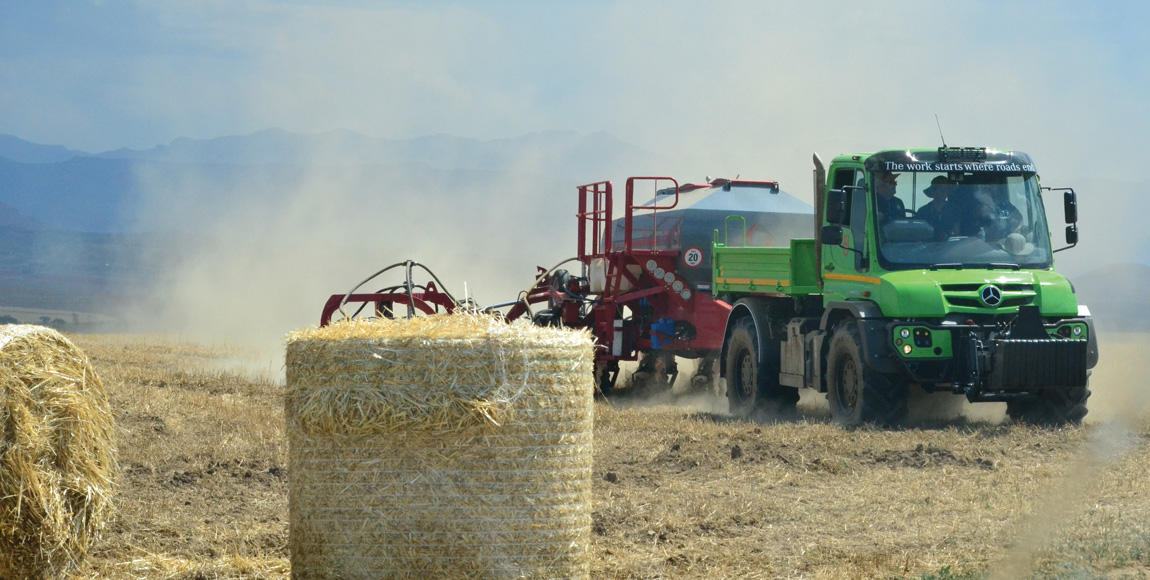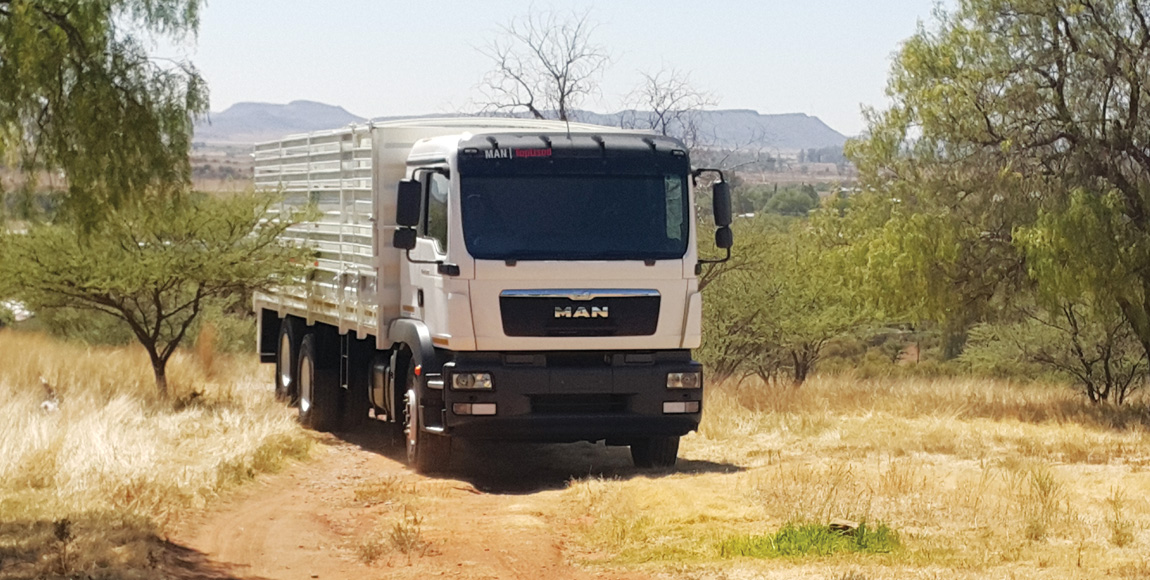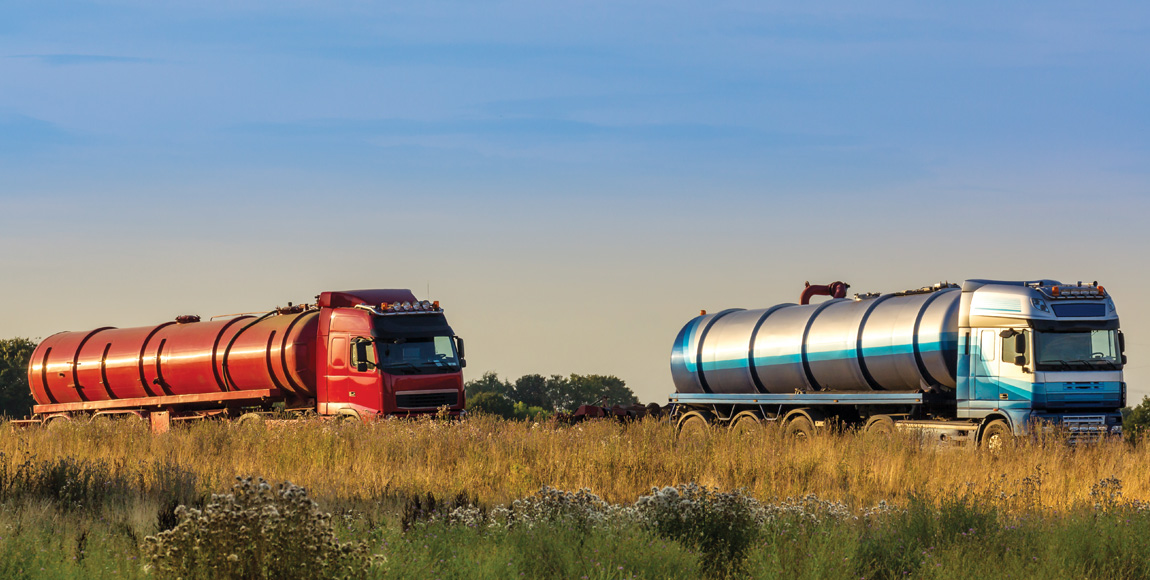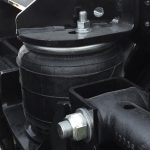Paving the way to smarter farming

LIANA SHAW explores how vehicle manufacturers and service providers are enhancing and adapting their service offerings to this important market segment
The primary agricultural sector in South Africa has grown by an average of about 2,2 percent per annum since 1994. Despite its relatively small share of the total gross domestic product (GDP), primary agriculture is an important sector in the economy. It is a significant provider of employment, especially in the rural areas, and is a major earner of foreign exchange. This is according to the Economic Review of the SA Agriculture 2016/2017.
The Mercedes-Benz Unimog – a new concept to market
The new Mercedes-Benz Unimog U529 released last year is a new concept in the South African agricultural industry offering haul speeds of up to 80 km/h.
According to the manufacturer, the key concept behind the Unimog U529 is its versatility allowing it to be used in all four seasons. It can fulfil a variety of agricultural roles including manure and fertilizer spreading, high-speed haulage, crop spraying, mowing, raking, baling, firefighting and combine harvester chasing. It can also be used as an implement carrier. It has the speed of a truck and incorporates Mercedes-Benz safety technology.
The Unimog U529 is custom built to meet each end-user’s requirements and can be specified in a large number of different configurations for specific applications.
Another notable feature is its central tyre-inflation system (CTIS), which allows inflation and deflation of the vehicle’s tyres while it is in motion. CTIS is said to offer excellent traction, protect the soil, prevent compaction and avoid wheel-spin that leads to excessive tyre wear when operating in a field.
The Unimog U529 has been designed for optimised weight distribution so that it can provide excellent traction when it is required to pull hard. It also features safe and predictable handling when running at high speed on the road.
The Unimog is ideal for those applications where power-to-weight ratio, speed and versatility are crucial. The idea behind a Unimog U529, according to Mercedez-Benz, is to buy the farmer or contractor time by performing those tasks not requiring massive drawbar power, faster than a conventional tractor, while using less fuel.

New transport solutions by MAN
MAN Automotive is also rising to the challenge from its four and five-tonne nett payload TGL products, to the six- through 16-t nett payloads of its TGM products, right through to the multitude of off-road TGM and TGS traction vehicles, and finally, to class-leading TGS/TGX on-highway 4×2 and 6×4 truck tractors, thereby covering almost every conceivable operational requirement within the field of agriculture.
Dave van Graan, head of special sales projects, says: “MAN Automotive South Africa sees the agricultural sector as a very broad industry, which is why we offer transport solutions for many different applications.
These would include vehicles suited to a logistics company at the consumer end of the agricultural supply chain that delivers pre-packed fresh fruit from a processing warehouse to a premium retail food outlet, or a fresh fish merchant transporting fish from a Namibian harbour to the Johannesburg markets. Our vehicles are specifically designed to suit each application.”
MAN has deployed a number of TG, CLA and VW vehicles into the Laser Logistics Group fleet that manages the Country Fair Chickens logistics supply chain. These vehicles are used in the transport of baby chicks to growing lots, and from there to preparation areas. Fresh chicken meat is then transported from the factories to retail outlets.
Companies such as Hestony Transport are clearly visible on southern African roads using TGM and TGS trucks for refrigerated food distribution. Loads have to be temperature controlled, and delivery needs to be controlled and verified through the use of telematics. All this is achieved by means of the MAN Telematics system, which conveys data via satellite between the vehicles and the operational control rooms.

MiX Telematics providing a value-add service
The transport sector relies on fleet and mobile asset-management solutions to provide it with real solutions for efficiency, safety, compliance and security.
This is also true when it comes to agriculture. For example, Northern Ireland-based North Down Grain is a case study in the use of the flagship fleet-management solution from MiX Telematics. This system allows it to manage, monitor and measure the performance of its vehicles and drivers. (The company operates a fleet of 29 000-litre rotating tankers that collect milk from up to 160 farms across the country.)
Director of North Down Grain, Philip Davidson, explains: “While we had some concerns in the early days that led us to question the return on investment of a system such as this, upon expressing our concerns, we were assigned a MiX Telematics fleet consultant, who worked closely with us to achieve our goals.
“The investment ultimately paid off. One of the key drivers for implementation was fuel consumption. By analysing North Grain’s fuel data, I understood that the company required a set of reports that would allow it to oversee overall fleet and driver performance. Using these reports on a weekly basis enables me to make strategic business decisions,” he adds.
“For example, we now rotate our drivers on different routes with different vehicles over specific time periods to help us identify our best drivers, our most efficient vehicles and the toughest route – all this is valuable information that we use to save costs.”
He continues: “One of the greatest achievements of the system so far is that we have improved the average fuel consumption from 2,0 km/l up to 2,45 km/l. Overall, this has contributed to a 12-percent saving on the company’s annual fuel bill.”
Davidson concludes: “Best of all, I have the mobile app installed on my iPhone. It is the first thing I check in the morning. It allows me to run a smooth and efficient business operation and offers peace of mind when I’m away from the office.”
Published by
Focus on Transport
focusmagsa




